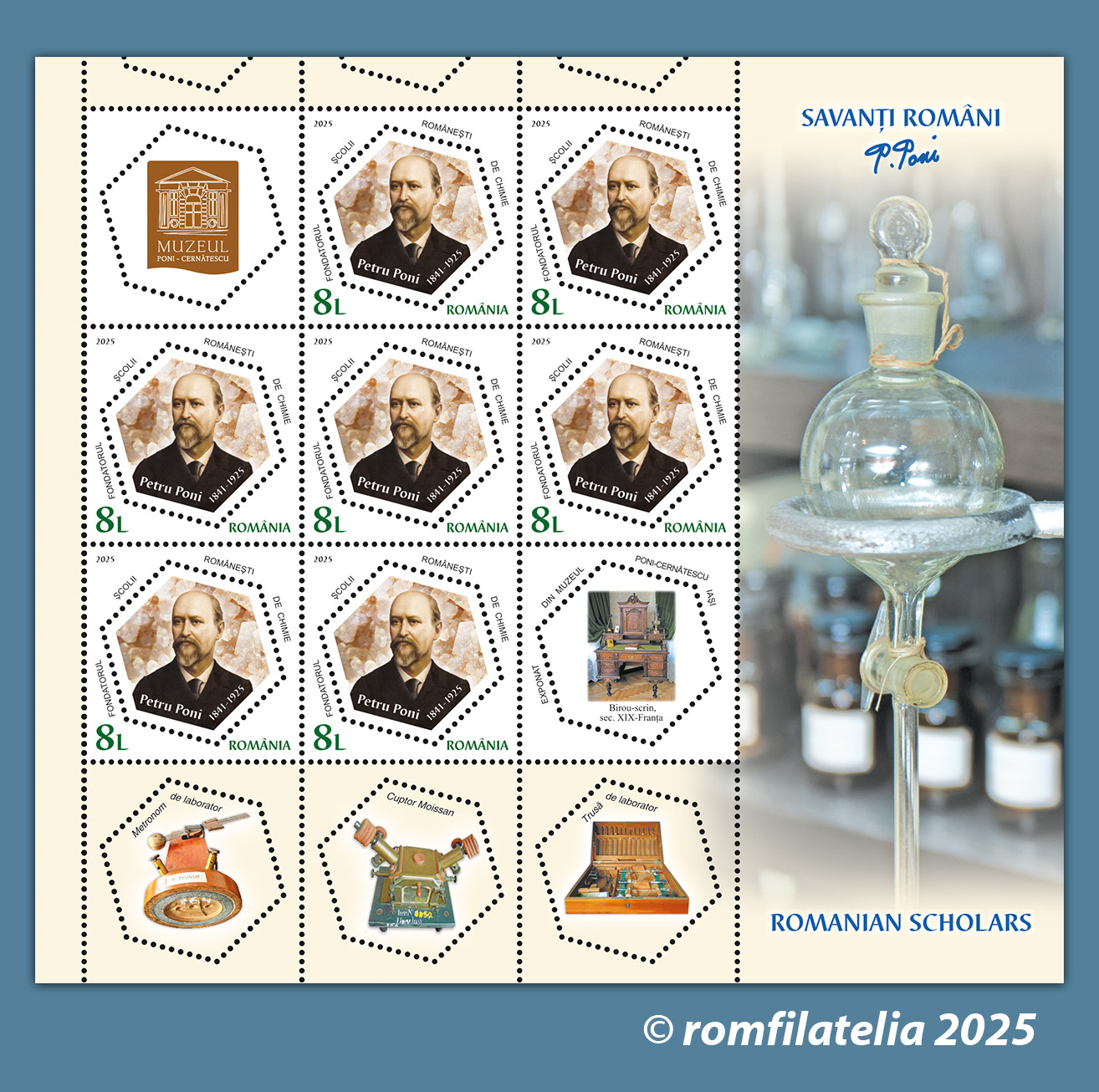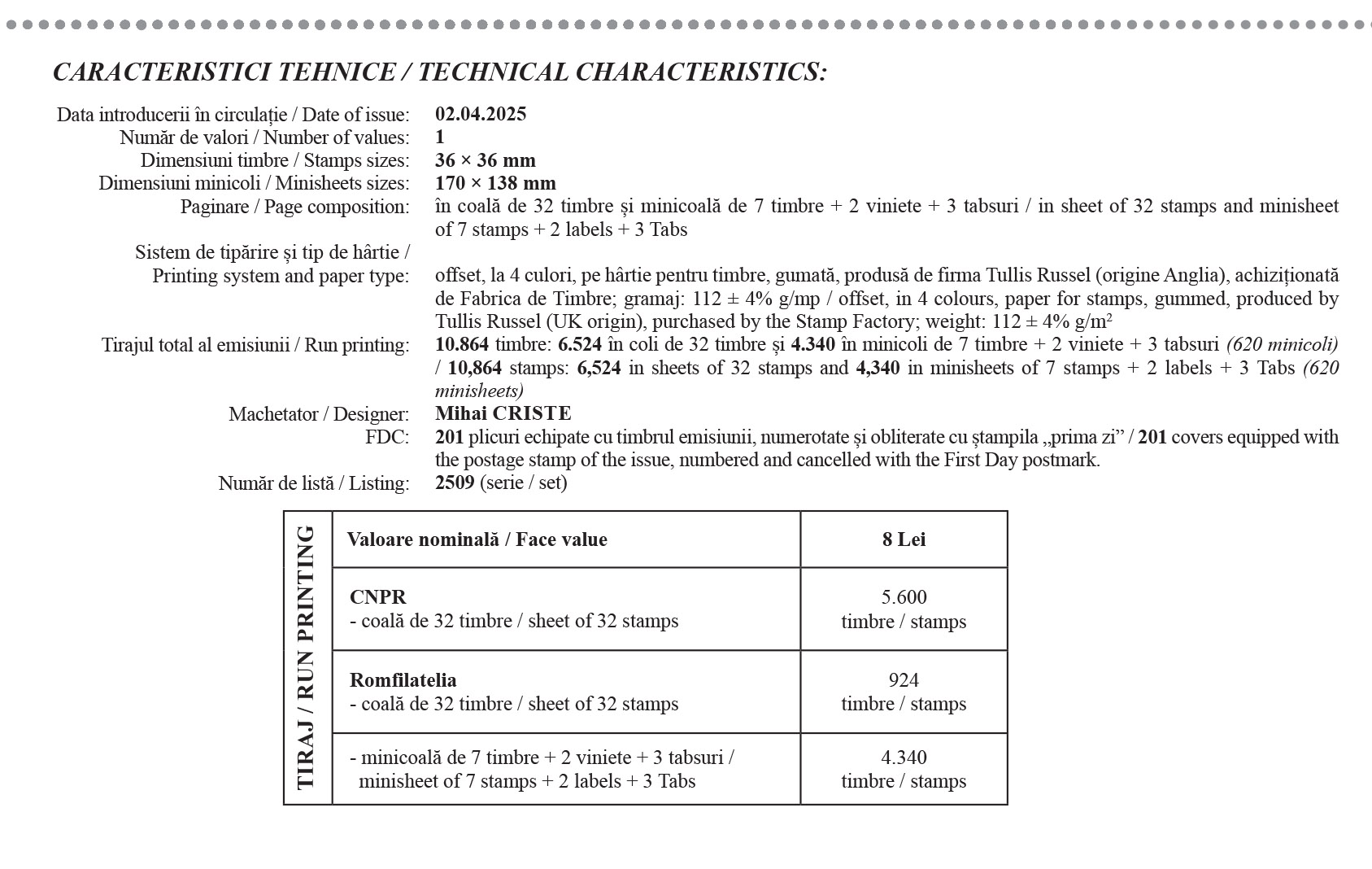 On the occasion of the centenary of the passing of the Romanian scholar Petru Poni, Romfilatelia introduces in circulation a postage stamps issue entitled Romanian Scholars on Wednesday, April 2nd this year. The issue consists of a postage stamp and a First Day Cover.
On the occasion of the centenary of the passing of the Romanian scholar Petru Poni, Romfilatelia introduces in circulation a postage stamps issue entitled Romanian Scholars on Wednesday, April 2nd this year. The issue consists of a postage stamp and a First Day Cover.
The Romanian scholar Petru Poni (born on January 4th, 1841, in the village of Secărești, Cucuteni Township – died on April 2nd, 1925, in Iași, Romania), whose portraitis is depicted on the postage stamp (with the face value of Lei 8), is considered the founder of the higher education school of inorganic chemistry and one of the most prominent figures in the history of Romanian science. Coming from a family of ‘răzeși’ (free peasants), he learned to appreciate rural work and displayed a passion for learning from an early age. After completing primary school in Târgu Frumos, he studied at the Mihăileană Academy in Iași and later at the University of Iași. In 1859, as a Romanian state scholarship recipient, he studied physics and chemistry at the Sorbonne University in Paris. He obtained a degree in Physical and Chemical Sciences in 1864, after five years of study in France.
Upon returning to Romania, Poni began teaching at various institutions in Iași (National High-School, United Institutes, and the Military School), making significant contributions to scientific education. He was a professor of mineral chemistry at the Faculty of Sciences (1878–1920) and the Faculty of Medicine (1878–1911) at the University of Iași. Petru Poni laid the foundation for the first laboratory-based chemistry studies, even under difficult conditions, with limited resources, and was among the founders of the Romanian school of inorganic chemistry. A significant moment in his career was the discovery of brostenite (a manganite containing Mn, Fe, and Ca) and badenite (a cobalt, iron, and nickel arsenobismuthide), which led him, starting in 1870, to initiate the first research on Romania’s mineral resources. He also dedicated himself to the study of Romania’s mineral waters and petroleum, conducting research that had an international impact on the oil industry.
Poni contributed to the establishment of several scientific societies, including the Iași Physics Society and the Romanian Society of Sciences. He was elected a member of the Romanian Academy in 1879 and served as its president from 1898 to 1901 and again from 1916 to 1923.
As a politician, he was elected multiple times as a deputy and senator and served as Minister of Religious Affairs and Public Education, playing a key role in the reform of the Romanian educational system. Between April and July 1907, and again in 1922, he served as the mayor of Iași.
Beyond his scientific and educational achievements, Petru Poni was a supporter of progress in various fields, including agriculture and industry. He advocated for agrarian reform and the application of science in areas such as mineralogy and industrial chemistry. In recognition of his contributions, he received numerous distinctions, including the Order of ‘Saint Sava’ of the Republic of Serbia (1896), the ‘Legion of Honour’ order of the French Republic (1900), and the Grand Cross of the ‘Franz Joseph’ Order of the Republic of Austria (1902).
The First Day Cover reunites a graphic design that includes an aspect of laboratory work, depicting the scholar alongside his daughter, Prof. Margareta Poni, Ph.D., as well as the titles of some of his authored works and an image of the architectural façade of the ‘Poni-Cernătescu’ Museum in Iași. The logos of the Romanian Academy and the ‘Poni-Cernătescu’ Museum in Iași represent the institutions that preserve the memory and renown of scholar Petru Poni, earned through his research and innovations in the pioneering field of Romanian inorganic chemistry.
Romfilatelia extends its gratitude to the specialists of the ‘Poni-Cernătescu’ Museum and the ‘Moldova’ National Museum Complex in Iași for their expert consultancy in the development of this postage stamps issue.



